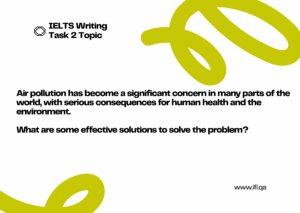Currently Empty: ر.ق 0,00
IELTS
IELTS Writing Task 2: Simple Sentences Vs. Compound Sentences

Simple Sentences Vs. Compound Sentences
Reading Time: 7 – 8 Minutes
What is a simple sentence?
Simple sentences are fundamental in English grammar and the IELTS writing task 2. They consist of a single independent clause. An independent clause contains a subject and a predicate (verb) that together express a complete thought, and it can stand alone as a sentence.
Examples:
- “The sun rises in the east.”
- “She loves reading books.”
Simple sentences are important in IELTS writing task 2 for several reasons:
- Clarity and Conciseness: Simple sentences can effectively convey information clearly and concisely, making understanding your message easier. Remember that they help maintain focus and prevent confusion by limiting the complexity of your writing.
- Grammatical Accuracy: By using simple sentences, you can demonstrate your ability to construct grammatically accurate sentences, which is an essential aspect of the IELTS writing assessment criteria.
- Variation: While it’s crucial to incorporate complex sentences to showcase your language skills, using simple sentences provides variation in sentence structure. A combination of simple and complex sentences creates a natural flow and keeps your writing engaging.
- Coherence and Cohesion: Simple sentences can help maintain coherence and cohesion in your writing. Using them strategically can make your paragraphs flow smoothly and logically, making it easier for the reader to follow your ideas.
Keep in mind that simple sentences are crucial for effective communication in IELTS writing. By using them together with compound sentences (explained below), you can demonstrate your language proficiency and create well-structured responses.
What is a compound sentence?
Equally important, compound sentences are an essential component of English grammar and play a significant role in the IELTS writing task 2. These sentences combine two or more independent clauses, which are groups of words with a subject and a verb that express a complete thought. Independent clauses can stand alone as separate sentences, but when joined together with a coordinating conjunction (such as “and,” “but,” “or,” “so,” “nor,” “yet,” or “for”) or a semicolon, they form a compound sentence.
Examples:
- “The rain stopped, but the wind continued to blow.”
- “She studied hard for the exam, so she passed with high marks.”
Compound sentences are important in IELTS writing task 2 for several reasons:
- Cohesion and Coherence: Compound sentences help establish relationships between ideas by linking independent clauses together. This contributes to the overall cohesion and coherence of your writing, demonstrating your ability to organize and present your thoughts effectively.
- Complexity: Using compound sentences showcases your ability to construct more complex sentences, which can positively impact your IELTS writing score. For this purpose, incorporating a variety of sentence structures demonstrates your grammatical range and improves your writing’s sophistication.
- Variation: By employing compound sentences, you introduce variation in sentence structure, making your writing more engaging and interesting for the reader. This also helps maintain a balance between simple and complex sentences.
- Clarity: Compound sentences can help express complex ideas more clearly by breaking them down into multiple clauses. This can make your writing easier to understand while still conveying the necessary information.
Like simple sentences, compound sentences are a vital component of IELTS writing as they contribute greatly to variation in your paragraphs. Using them effectively can help you achieve a higher score in the writing section of the IELTS exam.
Writing task 2 sample
The essay below contains several simple and compound sentences. Read it carefully and pay attention to how the writer has used both structures (green = simple sentence, blue = compound sentence) effectively throughout the essay.

In recent years, air pollution has appeared as a major environmental worry. It has negatively affected public health and ecosystems everywhere in the world. Addressing this pressing issue requires an approach that targets various sources of air pollution. This essay will discuss practical measures to lessen air pollution, focusing on clean transportation, green spaces, and efficient energy sources.
Firstly, promoting clean transportation is vital to decreasing air pollution. Governments can encourage the use of electric and hybrid vehicles by offering incentives like tax breaks and subsidies. Additionally, investing in public transit systems and cycling infrastructure can reduce reliance on private cars and minimize emissions. Affordable transportation options encourage individuals to use greener modes of travel.
Another approach to combating air pollution is the development and maintenance of green spaces. Urban planning should incorporate more parks, gardens, and green rooftops, which can absorb pollutants and improve air quality. Planting trees along streets and highways can serve as natural barriers, so they will filter out harmful particles from vehicle emissions. Encouraging residents to contribute by creating green spaces in their communities can further enhance these efforts.
Lastly, transitioning to renewable and efficient energy sources can significantly decrease air pollution. Governments should invest in solar, wind, and hydroelectric power projects, and they must motivate businesses and households to adopt these clean energy solutions. Implementing stricter regulations on industries can also be effective, as it would reduce the release of pollutants into the atmosphere.
In conclusion, a combination of sustainable transportation, increased green spaces, and clean energy sources can substantially reduce air pollution levels. Governments, businesses, and individuals need to collaborate, and the officials should prioritize these strategies to create a healthier, more sustainable environment for future generations.
In conclusion
Without a doubt, mastering sentence structure variety, including the use of simple and compound sentences, is a key factor in achieving a high band score in the IELTS writing task 2 part. Therefore, by skillfully including various sentence types, test-takers can demonstrate their language proficiency and maintain reader interest throughout their paragraphs. Fortunately, the IFI IELTS test center in Doha, Qatar, offers comprehensive lessons and courses. They are designed to help you excel in this area. Through expert guidance and targeted practice, our resources will enable you to confidently use a range of sentence structures, ensuring that you are well-prepared to succeed on the writing section of the IELTS exam.



